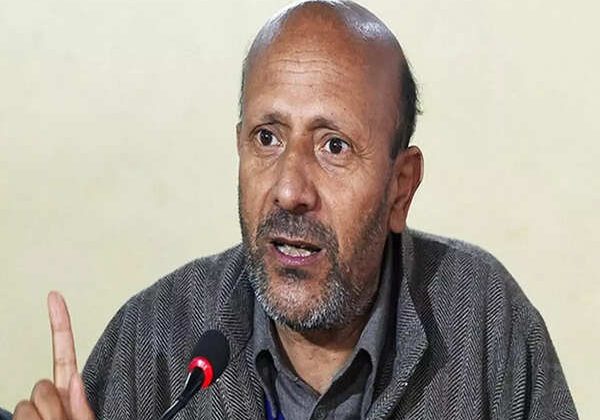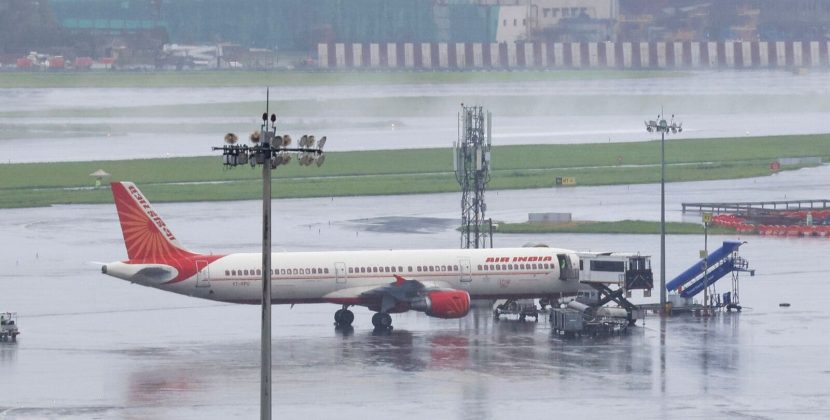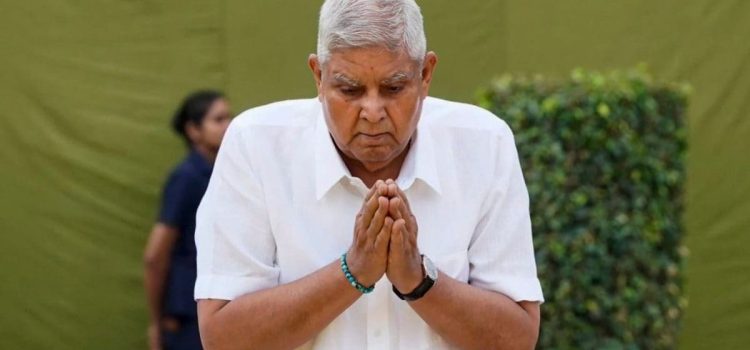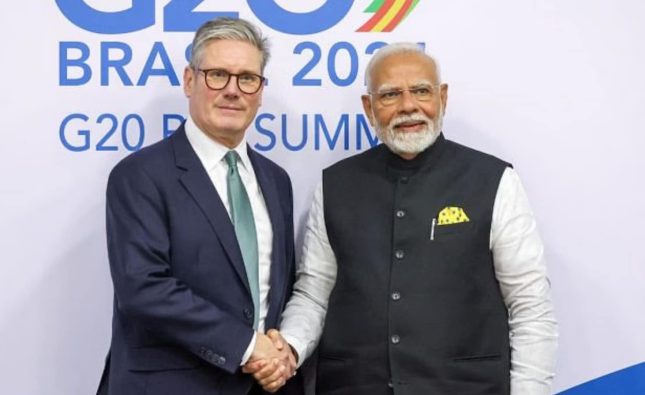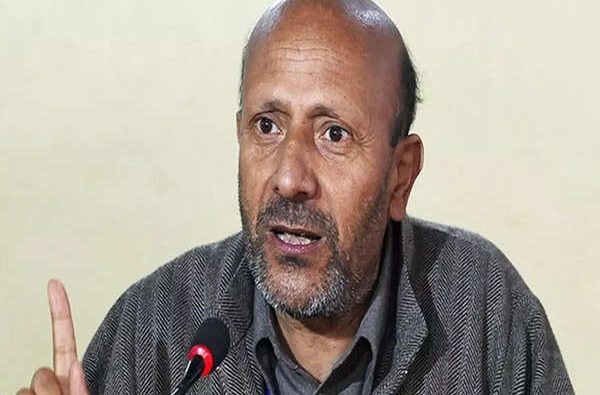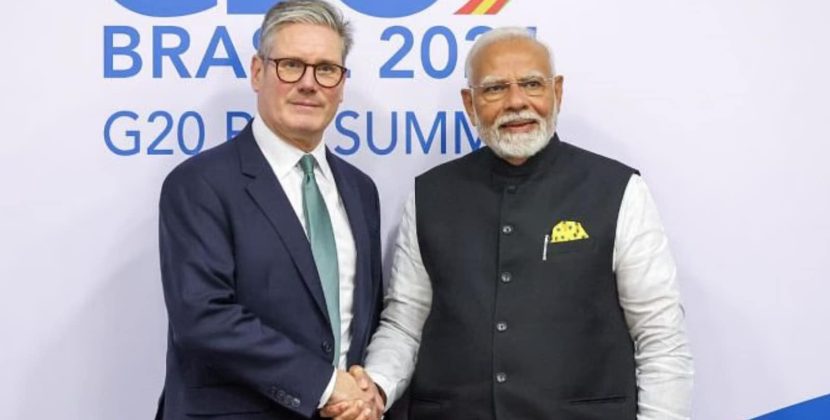
Last Updated:
As per rules of the Constitution, Rajya Sabha Deputy Chairman Harivansh Narayan Singh will take over the duties of RS Chairman starting Tuesday till a new Vice-President is elected
In a sudden move, Jagdeep Dhankhar resigned from his post citing medical reasons. (Image: PTI/File)
The sudden resignation of Vice-President Jagdeep Dhankhar from his post on Monday evening—also Day 1 of Parliament’s Monsoon Session—has generated a buzz in political circles. Dhankhar, who sent his resignation to President Droupadi Murmu, cited medical reasons for taking the step and said he is stepping down with immediate effect.
“To prioritise health care and abide by medical advice, I hereby resign as Vice President of India, effective immediately, in accordance with Article 67(a) of the Constitution,” Dhankhar said in his letter.
As per the rules of the Constitution, Deputy Chairman of the Rajya Sabha Harivansh Narayan Singh will take over the duties of Rajya Sabha Chairman (V-P) starting Tuesday till a new Vice-President is elected.
Following Dhankhar’s resignation, the position of Vice President of India—who also serves as the Rajya Sabha’s chairman—is now vacant, paving the way for a closely watched and potentially high-stakes election in the days ahead.
Here’s how the V-P is elected in India
Who elects the Vice-President of India?
The Vice-President is elected by an Electoral College, which consists of the members of the Lok Sabha and Rajya Sabha (both elected and nominated members).
Who can be elected as India’s Vice President?
A person cannot be elected as Vice-President unless he: is a citizen of India; has completed the age of 35 years, and is qualified for election as a member of the Council of States (Rajya Sabha). A person is not also eligible if he holds any office of profit under the Government of India or a State Government or any subordinate local authority.
What are the other conditions to be fulfilled?
Nomination paper of a candidate for the election in the prescribed form (Form 3 appended to the Presidential and Vice-Presidential Elections Rules, 1974) has to be subscribed by at least 20 electors as proposers and at least 20 electors as seconders and has to be presented to the Returning Officer, between 11am and 3pm on any day appointed for the purpose, either by the candidate himself or by any of his proposers or seconders.
The Security Deposit for the election of Rs 15,000 should also be deposited either in cash with the Returning Officer or a receipt showing that the amount has been deposited by the candidate or on his behalf in the Reserve Bank of India or in a Government Treasury should be furnished along with the nomination paper.
The candidate is also required to furnish a certified copy of the entry showing his name in the current electoral roll for the parliamentary constituency in which the candidate is registered as an elector.
Who conducts the election to the Office of Vice-President of India?
Under Article 324 of the Constitution of India, the authority to conduct elections to the Office of Vice-President is vested in the Election Commission of India.
What is the term of the office of the Vice-President?
The Vice-President holds office for a term of 5 years from the date on which he enters upon his office. However, notwithstanding the expiration of his term, he shall continue to hold office, until his successor enters upon his office. In the case of death, removal or resignation of the Vice-President, the Constitution does not provide any method of succession, apart from a fresh election. However, in such event, the Deputy Chairman can function as the Chairman of the Rajya Sabha.
What electoral system/process is adopted for the election?
As per Article 66(1) of the Constitution of India, the election of the Vice-President shall be held in accordance with the system of proportional representation by means of single transferable vote and the voting at such election shall be by secret ballot. Each MP ranks the candidates in order of preference (1, 2, 3, etc).
A prospective candidate must secure at least 20 proposers and 20 seconders from among MPs to file a valid nomination. A security deposit of Rs 15,000 is also required.
To win, a candidate must obtain a majority of the valid votes cast—meaning more than half. If no one meets this quota based on first-preference votes, the candidate with the fewest votes is eliminated, and their votes are redistributed according to the voters’ next preferences. This process continues until a candidate surpasses the required threshold.
The Election Commission must hold a fresh election promptly, preferably within 60 days of the position becoming vacant.
Who is appointed the Returning Officer/Assistant Returning Officer for the election?
By convention, the Secretary General, Lok Sabha or the Secretary General, Rajya Sabha is appointed as the Returning Officer, by rotation. Two other senior officers of the Lok Sabha/Rajya Sabha Secretariat are appointed as the Assistant Returning Officers. The Election Commission of India makes such appointments.
Where is the election to the Office of Vice-President held?
A room in the Parliament House in New Delhi is generally fixed as the place of poll.
How is the value of votes of members of the Electoral College calculated?
Unlike the Presidential election (where the value of votes cast by the Members of Parliament and of the various State Legislative Assemblies is different), the value of every vote cast in the Vice-Presidential election has the same value i.e. 1(one).
Are the provisions of the Anti-Defection law applicable in Vice-Presidential elections?
No. Members of the Electoral College can vote according to their choice/wish and are not bound by any party whip. The voting is by secret ballot.
Is the winner in a Vice-Presidential election elected on the basis of obtaining simple majority? Or by securing a specified quota of votes?
As the Vice-Presidential election is held in accordance with the system of proportional representation by means of single transferable vote, every elector has as many preferences as candidate contesting the elections. The winning candidate has to secure the required quota of votes to be declared elected, is 50 per cent of the valid votes cast +(plus) 1.
What is the procedure of counting in a Vice-Presidential election? How is the quota of votes to be secured by the winning candidate determined?
After the valid ballot papers are segregated from the invalid ones, the valid ballot papers are distributed among the contesting candidates on the basis of first preference marked on each of them for those candidates. The number of votes which each contesting candidate gets in this process is ascertained. The total number of valid votes secured by all contesting candidates is then ascertained by adding together the number of votes secured by each of them. This is the first round of counting.
For ascertaining the quota sufficient to secure the return of a candidate, the total number of valid votes cast at the election as ascertained in the first round of counting is then divided by two, and one is added to the quotient so obtained, ignoring the remainder, if any. The number so determined, is the quota, which a candidate should secure to be declared elected.
If the total value of the votes credited to any candidate at the first count, is equal to, or greater than the quota sufficient to secure the return of a candidate, he is declared elected by the Returning Officer. If, however, after the first round of counting, no candidate secures the requisite quota, then the counting proceeds on the basis of a process of elimination and exclusion, whereby the candidate credited with the lowest number of votes is excluded and all his ballot papers are distributed among the remaining (continuing) candidates on the basis of the second preferences marked thereon.
The ballot papers on which second preference is not marked is treated as exhausted ballot papers and shall not be further counted, even if the third or subsequent preferences are marked thereon. If no candidate secures the requisite quota, then the process of counting will continue on the same basis of elimination and exclusion, till a candidate secures the required quota of votes. In case, even after the exclusion of the candidates receiving the lowest number of votes, no candidates secures the requisite quota and ultimately one candidate remains as the lone continuing candidate, he is declared elected even if he has failed to secure the quota sufficient to secure the return of a candidate.
At an election where there are only two contesting candidates, the result of election will be known after the first round of counting itself. The candidate who has secured more number of votes than the other candidate shall be declared elected, as he has obviously secured the quota, i.e. 50 per cent of valid votes cast plus one.
Can the results of the election to the Office of Vice-President be challenged?
Yes. An election to the Office of the Vice-President can be called in question by means of an election petition presented to the Supreme Court. Such election petition should be presented by a candidate or ten or more electors joined together, and may be presented at any time after the date of publication of the declaration containing the name of the returned candidate at the election under Section 12 (of the Presidential and Vice-Presidential Elections Act, 1952), but not later than 30 days from the date of such publication.
Can a former V-P contest again?
Yes. The Indian Constitution does not restrict the number of terms a person can serve as Vice-President. A former Vice-President is fully eligible to contest again, whether immediately after completing a term or after a gap. They can serve multiple terms if elected through the prescribed process.

Apoorva Misra is News Editor at News18.com with over nine years of experience. She is a graduate from Delhi University’s Lady Shri Ram College and holds a PG Diploma from Asian College of Journalism, Chennai. S…Read More
Apoorva Misra is News Editor at News18.com with over nine years of experience. She is a graduate from Delhi University’s Lady Shri Ram College and holds a PG Diploma from Asian College of Journalism, Chennai. S… Read More
view comments
- First Published:

